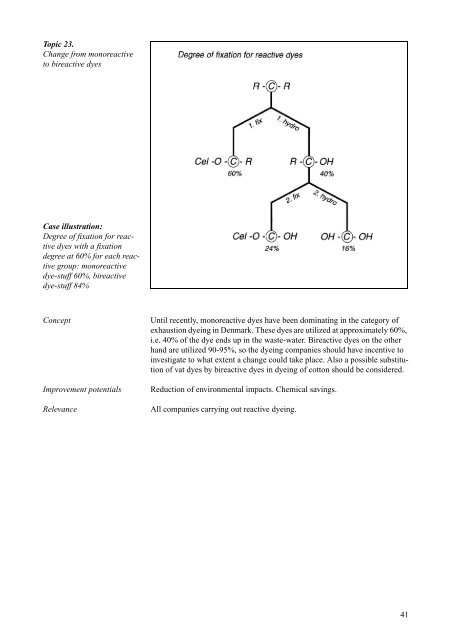Cleaner Technology Transfer to the Polish Textile ... - Miljøstyrelsen
Cleaner Technology Transfer to the Polish Textile ... - Miljøstyrelsen
Cleaner Technology Transfer to the Polish Textile ... - Miljøstyrelsen
You also want an ePaper? Increase the reach of your titles
YUMPU automatically turns print PDFs into web optimized ePapers that Google loves.
Topic 23.<br />
Change from monoreactive<br />
<strong>to</strong> bireactive dyes<br />
Case illustration:<br />
Degree of fixation for reactive<br />
dyes with a fixation<br />
degree at 60% for each reactive<br />
group: monoreactive<br />
dye-stuff 60%, bireactive<br />
dye-stuff 84%<br />
Concept Until recently, monoreactive dyes have been dominating in <strong>the</strong> category of<br />
exhaustion dyeing in Denmark. These dyes are utilized at approximately 60%,<br />
i.e. 40% of <strong>the</strong> dye ends up in <strong>the</strong> waste-water. Bireactive dyes on <strong>the</strong> o<strong>the</strong>r<br />
hand are utilized 90-95%, so <strong>the</strong> dyeing companies should have incentive <strong>to</strong><br />
investigate <strong>to</strong> what extent a change could take place. Also a possible substitution<br />
of vat dyes by bireactive dyes in dyeing of cot<strong>to</strong>n should be considered.<br />
Improvement potentials Reduction of environmental impacts. Chemical savings.<br />
Relevance All companies carrying out reactive dyeing.<br />
41

















